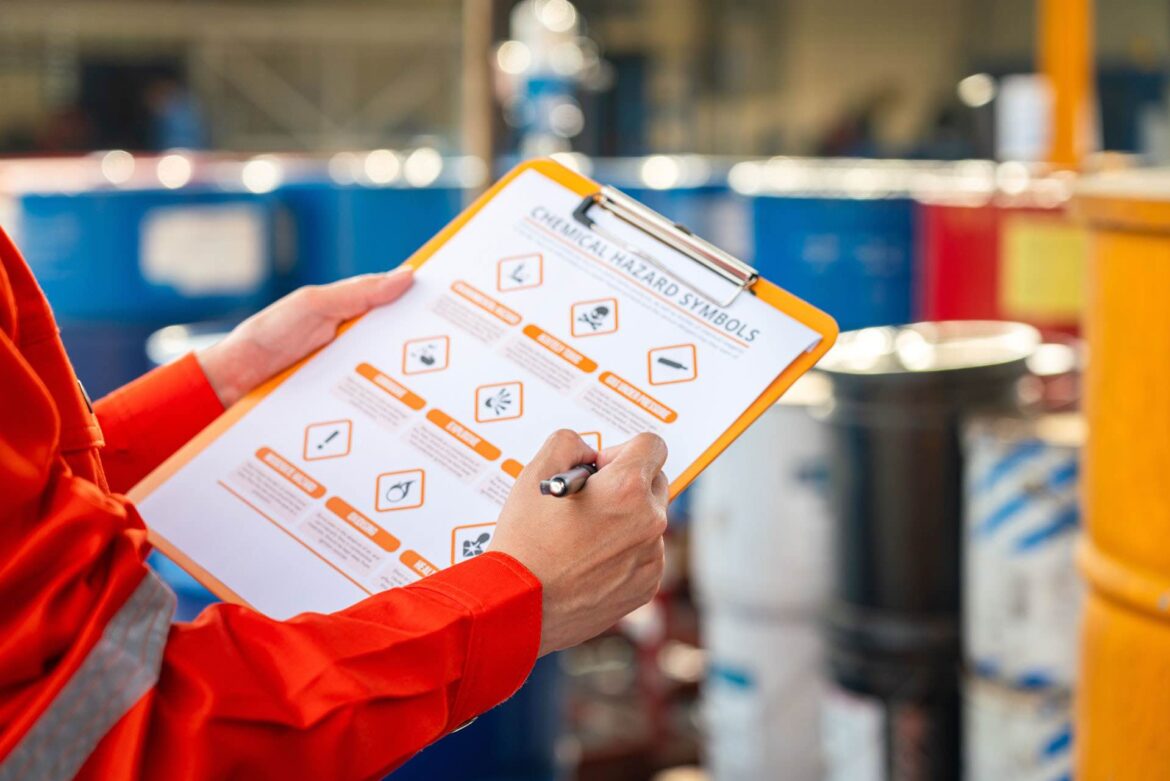
Empowering Employees through Environmental Health Training: Enhancing Workplace Safety and Compliance
The workplaces of today look very different to what they did even 20 years ago. It’s a dynamic landscape, but one thing remains constant – employee safety is paramount. Regulatory compliance evolves and technology constantly changes how humans operate at work, but staying safe is never optional.
This requires comprehensive, constant and consistent training for employees. While some could roll their eyes and think of this as unnecessary company cost, it would be very short-sighted. It is an opportunity to have a secure, safe and well-trained workforce. It is also an opportunity to be a step ahead of the competition when it comes to new business.
Investing in comprehensive training programs that empower employees enhances compliance and fosters a culture of safety. Ensuring that your workforce is equipped with the knowledge and skills necessary enables them to navigate the complexities of workplace safety. Whether this is empowering internal training or well-placed outsourcing, prioritising safety optimises operational effectiveness.
By investing in training initiatives, you can empower employees to identify a potential hazard in advance, respond effectively to emergencies and mitigate risks. Training programs demonstrate a tangible commitment to employee well-being. It simply boosts morale, increases retention rates and drives organizational success.
Environmental Health Training
Key Components and Benefits
This training aims to create a safer, healthier work environment by reducing the risks associated with hazardous materials, pollution, and unsafe practices.
1.Hazard Identification and Risk Assessment
Hazard Identification and Risk Assessment is a fundamental component of environmental health training. It involves recognizing potential hazards in the workplace and evaluating the risks they pose to employee health, safety, and the environment. This process helps in implementing effective control measures to mitigate these risks.
- Understanding Environmental Hazards: Training focuses on recognizing potential hazards such as chemical, biological, and physical agents.
- Risk Assessment Techniques: Employees learn to assess the severity and likelihood of risks, enabling proactive measures to mitigate them.
2. Handling Hazardous Materials
Handling hazardous materials is a critical part of workplace safety and environmental health training. It involves the safe management of substances that can pose risks to health, safety, and the environment. Proper training ensures that employees know how to handle these materials correctly, minimizing the risk of accidents, injuries, and environmental damage.
- Chemical Safety: Instruction on proper handling, storage, and disposal of hazardous chemicals, along with understanding Safety Data Sheets (SDS) and labeling systems.
- Biological Hazard Management: Training includes handling biohazardous materials safely and preventing contamination.
3. Noise and Air Quality Management
Noise and air quality management is focussed on controlling exposure to harmful noise levels and ensuring good indoor air quality to protect employee health and well-being.
- Noise Pollution Control: Techniques for monitoring and reducing noise levels, along with the use of hearing protection.
- Air Quality Improvement: Training covers ventilation, use of air purifiers, and measures to reduce exposure to airborne pollutants.
4. Use of Personal Protective Equipment (PPE)
- Proper Use and Maintenance: Employees are trained on selecting the appropriate PPE for different tasks and ensuring its proper maintenance.
- Compliance with Standards: Understanding OSHA and other regulatory requirements for PPE usage.
5. Emergency Response and Preparedness
- Spill and Leak Management: Procedures for responding to chemical spills and leaks to prevent environmental contamination.
- Evacuation and First Aid: Training on emergency evacuation procedures, first aid, and incident reporting.
6. Regulatory Compliance and Documentation
- Understanding Regulations: Employees learn about relevant environmental laws and regulations, such as those enforced by OSHA, EPA, and local agencies.
- Record Keeping and Reporting: Emphasis on maintaining accurate records and reporting incidents to ensure compliance and accountability.
Benefits of Environmental Health Training
1. Enhanced Workplace Safety
- Reduces the risk of accidents and injuries by promoting safe practices and awareness of potential hazards.
- Ensures employees are prepared to handle emergencies effectively, minimizing the impact of incidents.
2. Improved Employee Health and Well-being
- Protects employees from health issues related to exposure to hazardous substances and environmental pollutants.
- Promotes a healthier working environment, leading to increased productivity and morale.
3. Regulatory Compliance
- Helps organizations comply with environmental and occupational health regulations, avoiding penalties and legal issues.
- Encourages a culture of accountability and continuous improvement in environmental health practices.
4. Sustainability and Environmental Responsibility
- Supports corporate sustainability goals by reducing environmental impact through better waste management, pollution control, and resource conservation.
- Enhances the company’s reputation as a responsible and eco-conscious employer.
5. Cost Savings
- Reduces costs associated with workplace accidents, illnesses, and environmental fines.
- Improves operational efficiency through better resource management and reduced downtime.
Environmental health training is a vital investment for any organization, ensuring a safe and compliant workplace. By empowering employees with the knowledge and skills to manage environmental risks, businesses can protect their workforce, meet regulatory requirements, and promote a sustainable future.
One of Apex Environmental’s more service offerings is Occupational Hygiene Training.
As an Approved Inspection Authority (AIA), Apex Environmental runs courses and training programs covering fields such as Asbestos Site Safety and Occupational Hygiene. We have partnered with the British Occupational Hygiene Society (BOHS) to provide an Internationally recognised selection of courses and exams, which ensures that our students are trained to meet consistently high standards.
Apex Environmental is SANAS 17020 accredited and Department of Labour Approved Inspection Authority (AIA), offering a range of specialist Environmental and Occupational Hygiene monitoring services. Our focus is on assisting and guiding our clients with their legal obligations and protecting the health of their employees and the public in general.
We specialise in Occupational Hygiene, Environmental Monitoring, Risk Assessments, Training and Monitoring Equipment Sales. We recognize the benefits of strong partnerships, accurate data, comprehensive yet succinct reports and superior service.
For a comprehensive library of information regarding environmental hazards such as heat, dust, asbestos, soil and employee mental health, amongst many other related topics.








